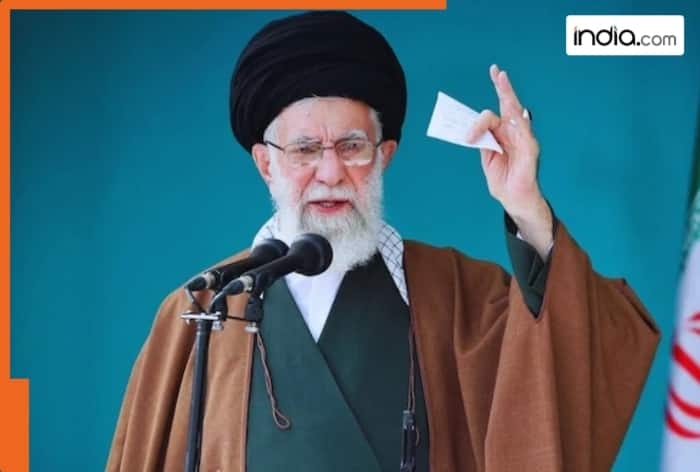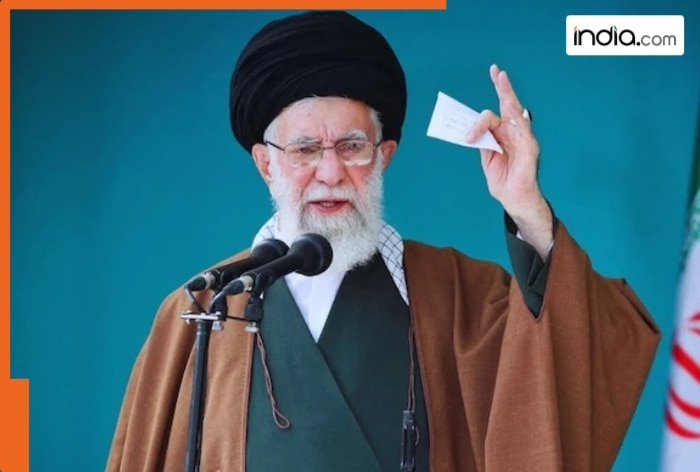Combat robots or robo-soldiers are a type of military vehicle designed to function without human deployment. These machines can operate both on the ground and in the air.

Amid conflict with Israel, Iran takes BIG step, may not use humans to fight wars; Tehran planning to deploy….
Amid rising tensions with Israel and the start of the Trump administration in the United States, Iran’s military has decided to deploy robotic soldiers on the battlefield. According to a senior Iranian military official, the army is testing combat robots and developing several new models. A report in the Tehran Times stated that the Iranian military began incorporating robotic warriors into its war exercises two months ago.
Although the senior official did not provide extensive details about the types of robots being tested or developed, it was revealed that the robots are currently being used in military drills in northeastern Iran. These exercises, which began on Sunday night, include participation from various military branches such as the Islamic Revolutionary Guard Corps (IRGC), the Artesh (Army), Basij forces, and the Coast Guard, showcasing their capabilities.
What is Combat robots or robo-soldiers
Combat robots or robo-soldiers are a type of military vehicle designed to function without human deployment. These machines can operate both on the ground and in the air. While unmanned aerial vehicles (UAVs) have been in use for some time, particularly in recent conflicts, Iran has developed unmanned ground vehicles (UGVs) similar to UAVs. These UGVs are intended to carry out attacks on the front lines of war.
Typically, these combat robots are remote-controlled rather than fully autonomous and are equipped with artificial intelligence that provides real-time data. Such fleets often include armored artillery, drone operator machines, and electronic warfare units. Similar to human soldiers, robo-fighters can identify enemy forces and destroy their positions on the battlefield. They are capable of operating in various geographical regions and can sometimes outperform human soldiers, as their defensive armor tends to be stronger. However, building these robotic warriors is usually more challenging and expensive.
The timing of Iran’s decision to test combat robots is crucial, as it comes at a time when a new government, led by Donald Trump, has assumed power in the United States. Iran fears that Trump, like in his previous term, may exert significant international pressure on Iran and impose stricter sanctions. On the other hand, Israel may also engage in a new confrontation with Iran, as tensions between the two nations remain unresolved.
According to a report by Tehran Times, during the current military exercises, Iran has revealed two new underground military bases and practiced counterterrorism operations in its western provinces, as well as training to prevent bunker-buster attacks near its nuclear facilities in the central and northern regions. Brigadier General Namati told Tehran Times that the latest phase of the exercises is focused not on defensive strategies but on evaluating war tactics.
Iran’s move to test combat robots is part of a broader global trend towards robotics in warfare. In the ongoing Russia-Ukraine conflict, Ukraine has deployed robotic dogs developed by the British company Brit Alliance against Russia. It’s speculated that Kyiv will soon use robotic systems with mounted machine guns in combat against Russia. On the other hand, Russia has made significant investments in combat robots, with China providing the technology. The collaboration has led to the development of unmanned ground vehicles (UGVs) like the Uran-9, robotic tanks, Platform-M, rocket strike systems, and Sorotnik, along with a seven-ton drone tank. Iran, a supporter of both Russia and China, has maintained strong relations with these countries.
